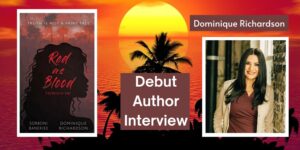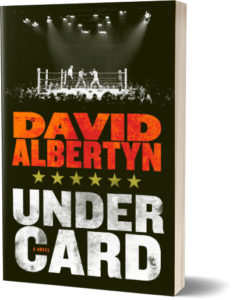Scroll Down For Part I
How did your concepts in the Weekend Novelist Writes a Mystery evolve?
The short answer:
To write a mystery, you cram four key characters (Sleuth, Killer, Victim, Catalyst) into the right Modular Scene—the Killing Scene, Discovery of the Corpse, Reporting the Crime, Crime Scene, Sleuth Onstage, etc.—and then you arrange the Modular Scenes in the best possible sequence.
A publishing success story: after more than a dozen years, The Weekend Novelist Writes a Mystery is still in print. In contrast, Dell dropped The WeekendNovelist after 7 years.
How we wrote the book:
We got a contract and a hot young Ivy League editor and Jack read 1,000 mysteries and I thought a lot about writing, waiting for him to finish reading, so he could tell me what to write.
We made a list of recurring characters: Sleuth, Killer, Victim, Sleuth’s Helper, Victim’s Friend, Killer’s Accomplice, Witnesses, Cops, Scapegoats and Fall Guys, Femmes Fatale—but there was something missing, some character type who lurks behind the scenes, a shadowy dude who pulls strings and makes things happen. This character could be the archetypal Mr. Big or the Evil Sorceress. We called it the Catalyst.
Our first example sprang came from the movies, Sidney Greenstreet’s role in The Maltese Falcon. He plays Caspar Gutman, the tubby evil master-mind who kills to gain possession of the black bird. On the film’s cast credit list, Catalyst Gutman is way down below the Sleuth (Humphrey Bogart) and the Femme Fatale (Mary Astor) and the Fall Guy (Peter Lorre), but when you write a mystery, you’d be smart to build the Catalyst first.
Jack’s favorite mystery writer is Dame Agatha Christie—he really admires the British aristocracy, the split worlds of Upstairs and Downstairs and Downton Abbey—so he assigned me to analyze the structure of Christie’s The Body in the Library, where we found our second Catalyst, a rich old man named Conway Jefferson, a wounded man in a wheelchair, who falls for a go-go dancer—he’s got money, she dies because he wants to adopt her, the killers don’t want her to inherit.
We opened the mystery how-to book with four chapters on Character: Killer first, then Victim followed by the Sleuth and the Catalyst. Creating the Killer first got us close to motive, which was buried with the wound in the back story. Digging up the killer’s past forced us to cozy up to evil—the killer kills because—and it led us to marking the killer, a tag the reader could follow—like Hannibal Lecter, who has six fingers on one hand.
Jack got really accurate at marking the killer—his years of reading in evolutionary biology, Levi-Strauss, structural anthropology, signs and symbols and ritual icons—and when we analyzed the killer in Gorky Park, Jack was the first to see the gold wrist-watch of killer John Osborne, American fur trader, and to link gold with Osborne’s deep Upper World tan in the middle of winter—his entrance in the steam bath room of the posh Moscow big-wig club—marking Osborne as the evil sun god.
Our biggest discovery about mystery writing (how to solve the problem of structure) was the modular scene—Crime Scene, Sleuth Onstage, Discovery of the Corpse, Reporting the Crime, Witness Interview, Victim’s Lair, Brush with Authority, Suspect Interrogation, Killer Onstage, Object Link, First Encounter (Killer and Sleuth, Osborne and Renko in the stream room was perfect), Lab Report, Recreation of the Crime, Torrid Sex (cop and femme fatale—not found in Cozies, alas).
To make our case for writing with modular scenes, we compared the first 19 scenes from a Christie cozy (the fragile tea-cup universe of the peaceful British countryside) and a police procedural (the frozen-corpse Metropolitan setting, snow and ice-skates) in Moscow’s Gorky Park. Both books open with the same modular scene: Discovery of the Corpse by an Innocent. The first four scenes are in the same order. Here’s a chart showing the first four scenes:
|
Body in the Library – Cozy
|
Gorky Park – Police Procedural
|
|
Discovery of Corpse
|
Discovery of Corpse
|
|
Reporting Crime
|
Reporting Crime
|
|
Sleuth Onstage (Marple)
|
Sleuth Onstage (Renko)
|
|
Crime Scene – Library
|
Crime Scene – Gorky Park
|
You might not know you’re writing in modular scenes—in Bloody Murdock, for example, I opened with the victim, a pretty would-be starlet in a party dress. The killer pressures her, she exits with a rising film star, the killer sends his henchmen. The henchmen kill the girl, which brings Murdock into the case.
The modular scenes that open Bloody Murdock:
· Victim Onstage
· Killer Onstage
· The Killing
· Sleuth Onstage
How would you define yourself as a writer?
The short answer: Old.
Irrelevant.
Still going.
Still grasping at the Brass Ring.
Still suffering from the Writer-Needs-Love disease: Love Me, Love my Words.
This question gave me a chance to look back over my shoulder—the road to writing.
I came from a family of artists. My mother and grandmother painted. My sister painted and did clay sculpture. My brother can draw and do math and play musical instruments. My dad was an editor of a local newspaper who wrote taglines for cartoon writers. Cartoonists loved his work. These were big-time guys, syndicated, under time pressure. They begged for more. The cartoonists could draw, but my dad could write. He laid down a clear path to follow.
I grew up reading comic books—Batman, Daredevil, Terry and the Pirates—where I saw action contained in boxes on the page, with short snappy dialogue lines enclosed in bubbles over the speaker’s head. Monologues were rare in comics. Given the chance today, I choose dialogue over monologue. Action over narration and exposition. To me, good writing is word-pictures.
I am a writer today because writing was what I could do back then. My first short stories were bad. My first attempts at novels were lower than amateurish. My essays stank. I loved reading novels (The Hardy Boys, Nancy Drew) but I had no clue about how to build one. Writing courses were grim back then.
My first published book was not a novel, it came out in 1963.
The book was called The Art of Reading: A Handbook on Writing.
The core action of the Handbook was circling key words—nouns in red, verbs in green, pronouns in purple—because the physical act of enclosing a word in an elliptical bubble forces you to slow down and look at the words, the patterns they make, the weight of clusters on the page. It was like comic books without pictorial action.
But curses upon curses, my prose was stilted and academic. I was a neophyte college professor at a small college in Wisconsin—in the arcane world of academic writing, one apes one’s betters, hoping to survive.
But there was hope in cause-and-effect: the students who circled key words wrote better, with more confidence, and when they read aloud the classroom rang with poetry and song—because they had seen the pattern of words in a paragraph, because they had heard the deep throbbing pulse of language.
Circling words made me a deeper reader. Analyzing movies made me see subplots in layers. The novel is a story told with one plot and at least two subplots. I am a writer who sees the bones of the novel. I am a guy who loves using words on paper. I want to be loved for my words.
What are you working on now?
The short answer: It feels like a graphic novel—a space-age Pilgrim’s Progress laced with accidental allegory, with a cast of outsize archetypal characters.
It reads with the spare speed of a tight film-script, leaping from one scene to the next, using the CUT-TO—a writing tool that came from teaching screenwriting with Jack at the UW.
My hero is an Altar Boy, sixteen years old in Warpp-Time.
Some 200 Moons in Moon-time.
He’s been abused, he wants revenge.
He gets recruited into a secret female army—powerful heroic women seeking to restore the Matriarchy.
He falls in love with an Older Woman.
The myth-base comes from Oedipus, Rex—where the son kills the father.
The action is a Quest for Dad, a tale of mythic adventure that borrows from the voyage of Ulysses/Odysseus and Sir Parsifal’s Quest for the Holy Grail.
The Altar Boy’s Quest starts at the Heptagram, a seven-tubed octopoid portal which coughs our hero through a zipper in a tinted membrane (each tint is a Chakra Color) that targets the father as he comes of age (conception, birth, naughty boy, preacher, governor, Satan on the road to the Presidency).
Writer at Work.
At my advanced age, I still do Natalie Goldberg’s writing practice. I write. I take what comes. The words forming this new book came from writing twice a week at Louisa’s Bakery and Café. The first line was something like: “The President was impotent.” That line set up the problem. President of what? Was the impotence sexual? Intellectual? Political? Where was the President when he had this notion? Who else is impotent? Was this opening line drawn from the Sick King-Sick Kingdom ritual from mythic times?
And then I asked the next question—If the President is impotent, then who in this dead land is virile? Who can re-charge the world?—and the camera in my head shifted to this Altar Boy with the shaved head, on his knees in the Prefectory at Vatican Ost, the very definition of Submissive—this kid is a prisoner, he’s given up, his hands are cuffed to a ballet barre, there’s evil brewing behind him, pig-like oinks from a jowly fat man, a thin whistling of air from flared nostrils, and if you want to read more, please let me know on Facebook, because I need the love of my readers.
And please send me a title.
If I don’t use it, I’ll send it right back.
Final Words of Wisdom:
Jack says that 200 million Americans have a novel stuck inside, waiting to get out.
I hope that’s where they stay.
Inside.
The internet is glutted with crappy fiction.
Don’t augment the awful cyber-crap by adding 200 million bad novels.
The novel is a work of art.
You want yours to be brilliant, not hum-drum everyday.
Writing the novel takes infinite dedication, infinite patience, lots of training, and at least one super-nova break-through—that artistic, quasi-religious epiphany that seldom manifests when you need it most.
Herman Melville was halfway through Moby-Dickwhen he glimpsed the whalebone tiller—the magical object that breathed life into his book, the symbolic object onstage that fashioned the boat that Ahab destroyed seeking the whale.
Writer, hone your craft.
Honor your words.
Craft each sentence.
Use strong verbs and concrete nouns.
Avoid the paragraph—the box of words that never ends.
A paragraph can be one word.
A paragraph can be 20,000 words.
Don’t write chapters—they are moody, seductive, they can go on forever.
Instead, write scenes.
A scene has a time-limit.
And a structure.
A two-person scene (Character A vs. Character B) is a power-struggle.
A three-person scene is your chance for drama—the intruder enters, piercing the relationship bubble of A and B, tilting the balance, raising the question: Which character gets the assistance of Character C? Try this intruder-thing for yourself. See what gives.
Work at your writing.
Teach yourself the rudiments of rhetoric—anaphora, polysyndeton, anadiplosis, epizeuxis, apostrophe—and forge a link to the Greeks who wrote before you were born.
Do not harbor the delusion that the world waits for your novel.
There was this lady in fiction class. She did not do the timed writing. She sat there, her smile was bored, all-knowing. At the break, she raised her hand. Why all the fuss? she said. Why tire out your hand doing this silly timed writing—when she herself had five novels completed and number six half done?
So we asked was anything published?
Publication is imminent, she said.
So we asked how many pages?
The way she wrote, she said. She could not be bothered with pesky page numbers.
Then we asked where she stored her novels for safe-keeping, and here came the smile—bright, smug, triumphant. What was going on? What was she thinking? What was her big secret?
Maybe she was weary of being alone with her work. Maybe she had registered for the class to share the news of her success, and to rub shoulders with her fellow novelists.
Her smile beamed, like a beacon through the dark. She pointed to her head and nodded.
They’re right up here, she said. Right inside my head.




Grand finale to an insightful interview. Thanks, Elena, for rescuing this guy. All writers should read Bob's essay on the Chapter. It will clarify so many things: "Don’t write chapters—they are moody, seductive, they can go on forever.
Instead, write scenes."